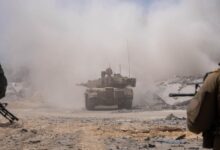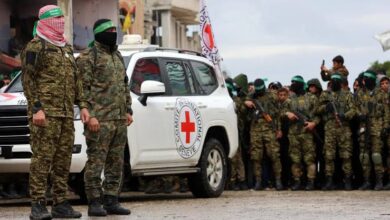Visual evidence contradicts Israel’s official account of deadly Gaza hospital attack
Al-Khamisa News Network - Gaza

Analysis of visual evidence by Reuters and other information relating to an Israeli strike on a Gaza hospital last month contradicts the Israeli account of the raid that killed people there.
The strike on Nasser Hospital on Aug. 25 killed 22 people, including five journalists. A military official said Israeli forces had planned the strike using footage captured by a drone that showed what they said was a camera belonging to the Palestinian group Hamas and that the camera was the target of the strike.
But Reuters’ visual evidence and other reporting show the camera seen in the footage was actually Reuters’ equipment and had been used for some time by one of its journalists.
The Israeli military official now says forces acted without the approval of the senior commander responsible for operations in Gaza. The official told Reuters about the bypass after the news agency presented the findings of its investigation to the Israeli military.
A day after Israeli tanks shelled Nasser Hospital, the official said an initial military review concluded forces had targeted a Hamas camera because it was filming them from the hospital. He added that troops had been suspicious of the camera because it was covered by a towel, and that a decision was made to destroy it.
Prayer rug
A screenshot taken from footage shot by an Israeli military drone shows a camera covered by a two‑coloured piece of cloth on the hospital stairs. The military official told Reuters last week that the camera covered by cloth was the target.
Reuters’ investigation found the cloth seen in the image was not placed there by Hamas. It was the prayer rug of Reuters journalist Hossam al‑Masri, who was killed in the strike.
Al‑Masri had placed his camera at least 35 times since May on the same stairs at Nasser Hospital in Khan Younis in southern Gaza to broadcast live for Reuters’ media clients around the world. He had often covered his camera with the green‑and‑white prayer rug to protect it from heat and dust.
Reuters’ investigation provides the most complete account so far of how the strike unfolded, including the Israeli forces’ bypassing of the chain of command, and Reuters has conclusively determined the camera that was targeted was its equipment.
Earlier, the Associated Press, which lost one of its journalists in the hospital strike, said it had found strong evidence that the camera Israel described as the strike target belonged to Reuters.
Tragic incident
Israeli Prime Minister Benjamin Netanyahu described the hospital strike as a “tragic incident.” A military official told Reuters that al‑Masri and the other journalists present were not the target of the strike and were not suspected of having links to Hamas.
Ismail Thawabta, director‑general of the Gaza government media office run by Hamas, said the Israeli military’s claim that the group was filming Israeli forces from Nasser Hospital was “a false allegation lacking any evidence, aimed at shirking legal and moral responsibility for a full‑blown massacre.”
Despite these revelations, and a month after the strike, the Israeli military has not provided a full explanation of how events unfolded that led to the targeting of Reuters’ camera and the death of Hossam al‑Masri.
The Israeli military has also not explained the following:
* Why hospital staff or Reuters were not warned of its intention to strike the hospital?
* Why, after the camera was hit in the first strike, the military shelled the stairs again nine minutes later, killing other journalists and medics who rushed to the scene?
* Whether it took into account that the hospital stairs where al‑Masri was filming at the time of his death were regularly used by many journalists to capture footage and file reports during the war?
* Who approved the strike?
The military official did not disclose who ordered the strike, despite the regional commander’s lack of approval.
Prevailing pattern
The absence of any full explanation for what happened at Nasser Hospital fits a pattern in Israeli military attacks that have killed journalists since Israel launched its campaign nearly two years ago after the Oct. 7, 2023 Hamas attack.
Reporters Without Borders says it has documented 201 journalists and media workers killed in Gaza, Israel and Lebanon since the fighting spread shortly after the initial attack. That figure includes 193 Palestinians killed by Israeli fire in Gaza, six people killed by Israel in Lebanon and two Israelis killed in the Oct. 7, 2023 attack.
Reporters Without Borders said Israel has never published the results of any official investigation, has not held anyone accountable for journalists killed by Israeli army fire, and none of these incidents has led to a serious review of Israeli rules of engagement. International condemnation has not changed the pattern of attacks on journalists over the past two years.
An Israeli army spokesman said: “The Israeli army works to limit harm to civilians, including journalists, as much as possible.”
He added: “Given the continued exchange of fire, remaining in an active combat area naturally involves risks. The Israeli army directs its strikes only at military targets and military elements, and does not target civilians or civilian objects, including media institutions and journalists.”





